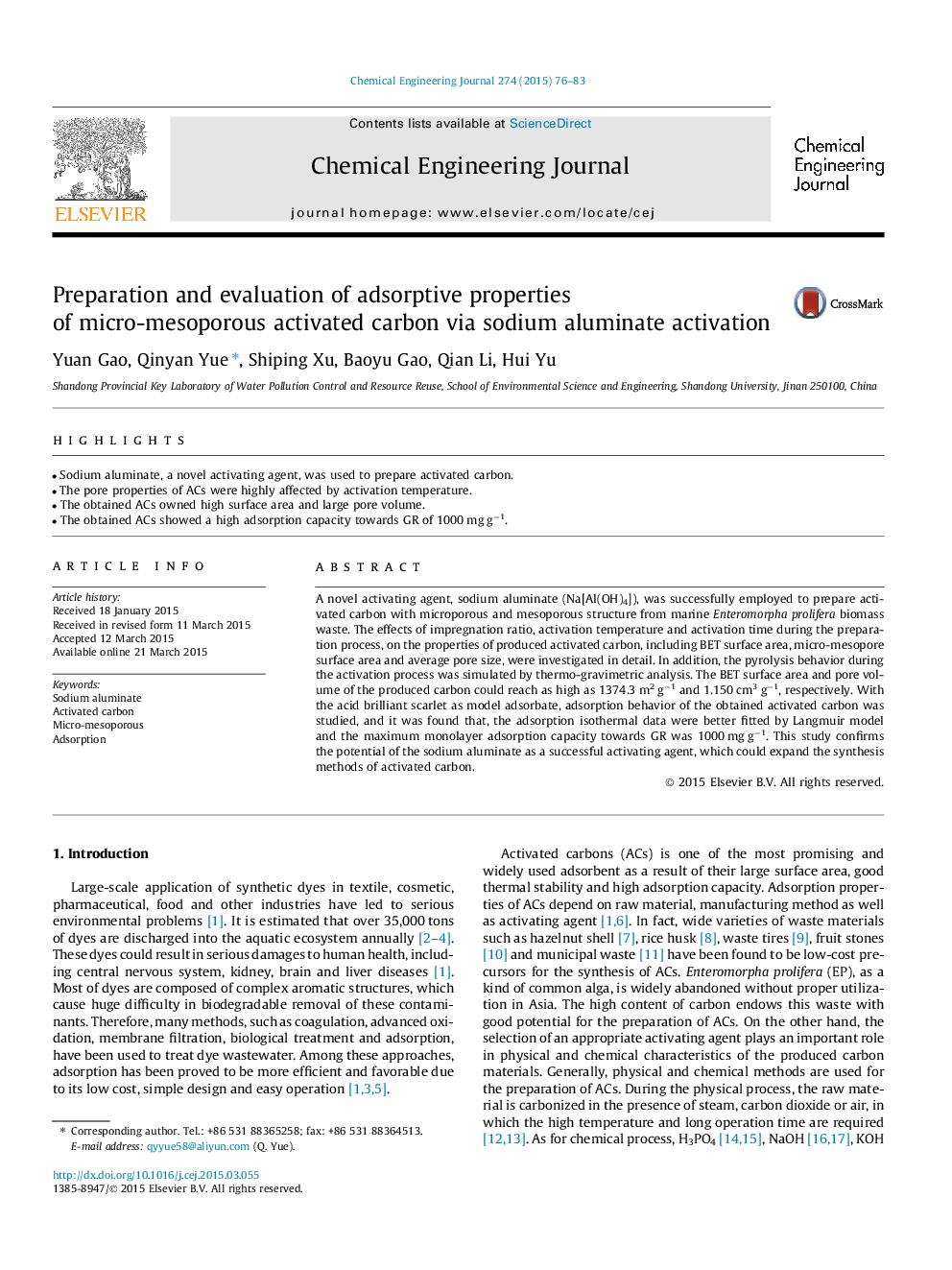| Article ID | Journal | Published Year | Pages | File Type |
|---|---|---|---|---|
| 146386 | Chemical Engineering Journal | 2015 | 8 Pages |
•Sodium aluminate, a novel activating agent, was used to prepare activated carbon.•The pore properties of ACs were highly affected by activation temperature.•The obtained ACs owned high surface area and large pore volume.•The obtained ACs showed a high adsorption capacity towards GR of 1000 mg g−1.
A novel activating agent, sodium aluminate (Na[Al(OH)4]), was successfully employed to prepare activated carbon with microporous and mesoporous structure from marine Enteromorpha prolifera biomass waste. The effects of impregnation ratio, activation temperature and activation time during the preparation process, on the properties of produced activated carbon, including BET surface area, micro-mesopore surface area and average pore size, were investigated in detail. In addition, the pyrolysis behavior during the activation process was simulated by thermo-gravimetric analysis. The BET surface area and pore volume of the produced carbon could reach as high as 1374.3 m2 g−1 and 1.150 cm3 g−1, respectively. With the acid brilliant scarlet as model adsorbate, adsorption behavior of the obtained activated carbon was studied, and it was found that, the adsorption isothermal data were better fitted by Langmuir model and the maximum monolayer adsorption capacity towards GR was 1000 mg g−1. This study confirms the potential of the sodium aluminate as a successful activating agent, which could expand the synthesis methods of activated carbon.
